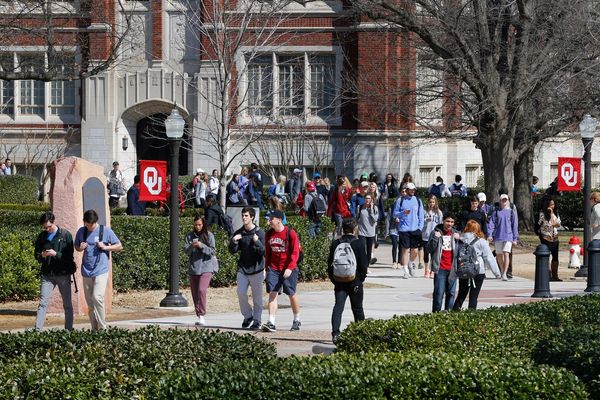SACRAMENTO, Calif. — When Nia MooreWeathers first heard about California’s sweeping plan to shutter its youth prisons and transform the state’s juvenile justice system, she was filled with hope.
As a community organizer for the Sacramento nonprofit Youth Forward, she saw it as a long-overdue opportunity to reimagine how incarcerated youth are housed and treated. Juvenile offenders would serve their time closer to home, in settings that emphasized mental health care and other supportive services.
But before long, MooreWeathers and other advocates across the state say, they realized it would take a fight to have their voices heard in the push for more progressive policies.
“Community involvement was supposed to be a distinct part of the implementation process,” she said. “But it became really apparent to our coalition that it was going to be a struggle.”
Two and a half years after Gov. Gavin Newsom enacted new laws meant to provide better community-based alternatives to California’s violence-plagued youth prisons, advocates are going to court to fend off the formation of what they say is a new “shadow” juvenile justice system.
County probation officials — who opposed Newsom’s plan but are tasked with implementing it — have taken the unusual step of forming a nonprofit organization, allowing them to circumvent state transparency laws and meet behind closed doors to avoid public scrutiny.
If left unaddressed, advocates fear these issues could cause an uptick in youth incarceration, the opposite of what the state law was intended to achieve.
“My concern is that we’re seeing the creation of the shadow jury and justice system that operates outside of the public,” said Abraham Medina, director of the California Alliance for Youth and Community Justice. “Without community engagement, they’re just going to continue to center their special interests instead of the best interests of the children that they’re supposed to care for.”
California shifts juvenile incarceration responsibilities to counties
In 2020, Newsom signed legislation that set in motion a transformation of California’s troubled youth correctional system. Senate Bill 823 directed the closure of its state-run juvenile facilities and shifted funding and responsibility for young offenders to the 58 counties. It was referred to as a “realignment” of the state’s juvenile justice system, and it built off a larger effort by former Gov. Jerry Brown to divert adult felons convicted of lower-level crimes to county jails.
The move, which came after years of alarming reports and lawsuits over violent and abusive conditions at the state-run facilities, was touted as an example of Newsom’s commitment to “end juvenile imprisonment as we know it” and disrupt the school-to-prison pipeline.
Whether the law will lead to such enlightened change remains to be seen.
The law placed a moratorium on nearly all new juvenile admissions to state-run prisons in mid-2021. The complete closure of the state’s remaining three Department of Juvenile Justice facilities — two in Stockton and another in Ventura — is set for July 1.
About 300 youths currently remain housed in the state-run facilities, a small fraction of the more than 8,000 who were behind bars a decade prior. About 40 are from Sacramento County and will be transferred closer to home soon, according to Sacramento County chief probation officer Marlon Yarber.
County probation chiefs launch nonprofit shrouded in secrecy
County probation chiefs saw Newsom’s plan as an attempt to reduce costs and shift liability without giving local officials enough time or money to successfully make the change. Counties were obligated to take in young people with some of the most severe mental health and behavioral needs and many probation officials felt they did not have adequate resources to properly serve them.
They also took issue with the creation of a new Office of Youth and Community Restoration (OCYR) that was tasked with overseeing the transition. It was placed under California’s Health and Human Services Agency, a move that aligned with the state’s goal of transitioning from a punitive to a rehabilitation-focused approach.
Local probation officials saw it as another level of bureaucracy they had to contend with.
“As I’ve said to our board of supervisors, whenever someone references the word ‘realignment’, just know that you’re going to get a whole lot of responsibility and probably, you know, a fraction of the resources to do the job that you need to do,” said Yarber. “The Division of Juvenile Justice realignment is no exception.”
Shortly after Newsom’s decision to close youth prisons, probation chiefs from across the state began working in private to form a new nonprofit. The County Probation Consortium Partnering for Youth Realignment, with a board comprised of most of California’s probation chiefs, was created to “work to safely address the needs of youth at the deepest end of the juvenile justice service,” according to its website.
But it’s not clear why the nonprofit was needed.
The state’s OYCR was charged with that same mission and awarded $20 million to help local officials make adjustments.
Now, OYCR is using $760,000 of those funds to pay the nonprofit to help it collect data from the counties and make recommendations on needs and resources. The nonprofit has also collected more than $750,000 in public funds directly from counties, including nearly $60,000 from Sacramento County, according to court documents.
OYCR director Katherine Lucero declined requests for an interview. In an emailed statement, Lucero defended the state contract with the Consortium, calling it a “venue for counties to develop resources that each could not create on its own.”
Advocates worry the nonprofit will do ‘more harm than good’
In February, the California Alliance for Youth and Community Justice filed a lawsuit in Sacramento Superior Court alleging that county probation officials launched the nonprofit to withhold public data that it collects and sidestep state oversight and public scrutiny.
The Youth Law Center, which is representing the youth justice organization that filed the lawsuit, argues that since the Consortium is run by county officials using public dollars, it should be bound by the same transparency laws as the public agencies charged with overseeing the care of incarcerated youth.
Meredith Desautels, staff attorney at the Youth Law Center, said she worries that CPOC and the Consortium could take over critical state oversight authority without any public input, possibly harming those in the youth justice system.
“Now is the time for the state to step in and make sure that this process doesn’t end up doing more harm than good,” Desautels said.
Karen Pank, a board member of the nonprofit and executive director of the business association Chief Probation Officers of California, declined to answer questions about the nonprofit, citing pending litigation.
In a statement, Consortium executive director Elizabeth Siggins called the lawsuit “baseless” and a “distraction towards the collective work in identifying the gaps in treatment options for youth.”
A new use for California juvenile justice halls
This isn’t the first red flag advocates have raised about realignment.
The legislation required counties to identify alternatives to confining minors in adult lockups. The law specifically called for secure youth treatment facilities that provided mental health and other supportive services that were ”evidence-based, promising, trauma-informed, and culturally responsive.”
Most counties, including Sacramento, decided to place the majority of young people returning from state-run prisons in their juvenile halls, which were originally built for short-term pretrial stays. Sacramento County has allocated the majority of realignment funding received from the state for new probation officers, equipment and other staff at the facility.
Advocates argue that those moves undermine the intent of SB 823. A 2020 report from the Youth Law Center and Pacific Juvenile Defender Center found that county juvenile halls “operate much like jails, relying on hardware and control measures that are antithetical to developmentally appropriate services for youth.”
Despite the concerns raised, Yarber said county probation departments like his are acutely focused on addressing the treatment and health needs of all the young people under their care and preparing them to return to their community.
The Sacramento Youth Detention Facility is touted as a prime example, having received national recognition in recent years for its focus on rehabilitation and positive outcomes. The facility — located about 10 miles from downtown Sacramento on Kiefer Boulevard — has a garden, swimming pool, gym and two multi-sensory de-escalation rooms designed to help with relaxation.
“I think it’s a mischaracterization that we want to keep youth under our thumb,” Yarber said. “When we can effectuate releases safely and get youth on their way — recognizing that everyone’s made a mistake — we will pursue all of those options that are available.”
Youth advocates sue Sacramento County
The handling of the realignment process by some counties, including Sacramento, also sparked other lawsuits.
Youth Forward sued Sacramento County in July 2022 because a county probation subcommittee tasked with supporting and planning for the needs of transferred young offenders was holding closed-door meetings. The group alleged that the county was violating the Brown Act, a decades-old California law governing public access to legislative meetings.
A similar lawsuit was filed against Fresno County in October 2021.
In both cases, the counties settled within months. Sacramento County agreed to open all subcommittee meetings to the public with remote access options, increase the number of community members on the body and conduct an annual review of the county’s juvenile justice realignment plan.
Yarber blamed the issue on the state’s short deadline for crafting and implementing a county realignment plan. Newsom signed SB 823 on Sept. 30, 2020, and counties were only given several months to prepare for an influx of incarcerated youth in their facilities.
“It was not anything done in secret, just really trying to move as quickly as we can,” he said.
Despite the victory for Youth Forward and other advocates in Sacramento, MooreWeathers said still finds herself fighting for transparency — now through yet another lawsuit.
“The focus of this bill was supposed to be improving justice-impacted youth lives,” she said. “But when you are operating behind closed doors and when you are not allowing community involvement, it does not feel like that’s what is happening.”







